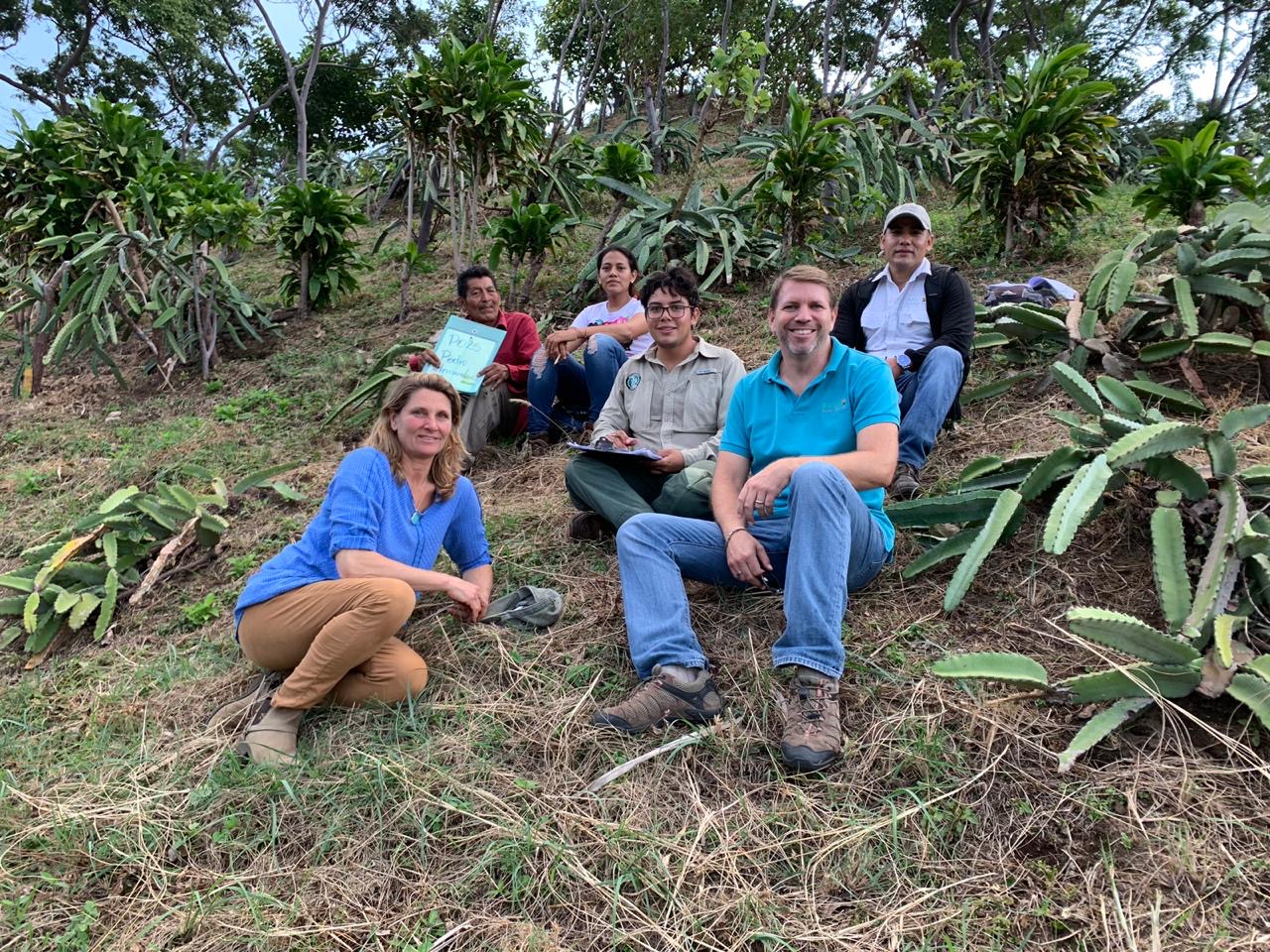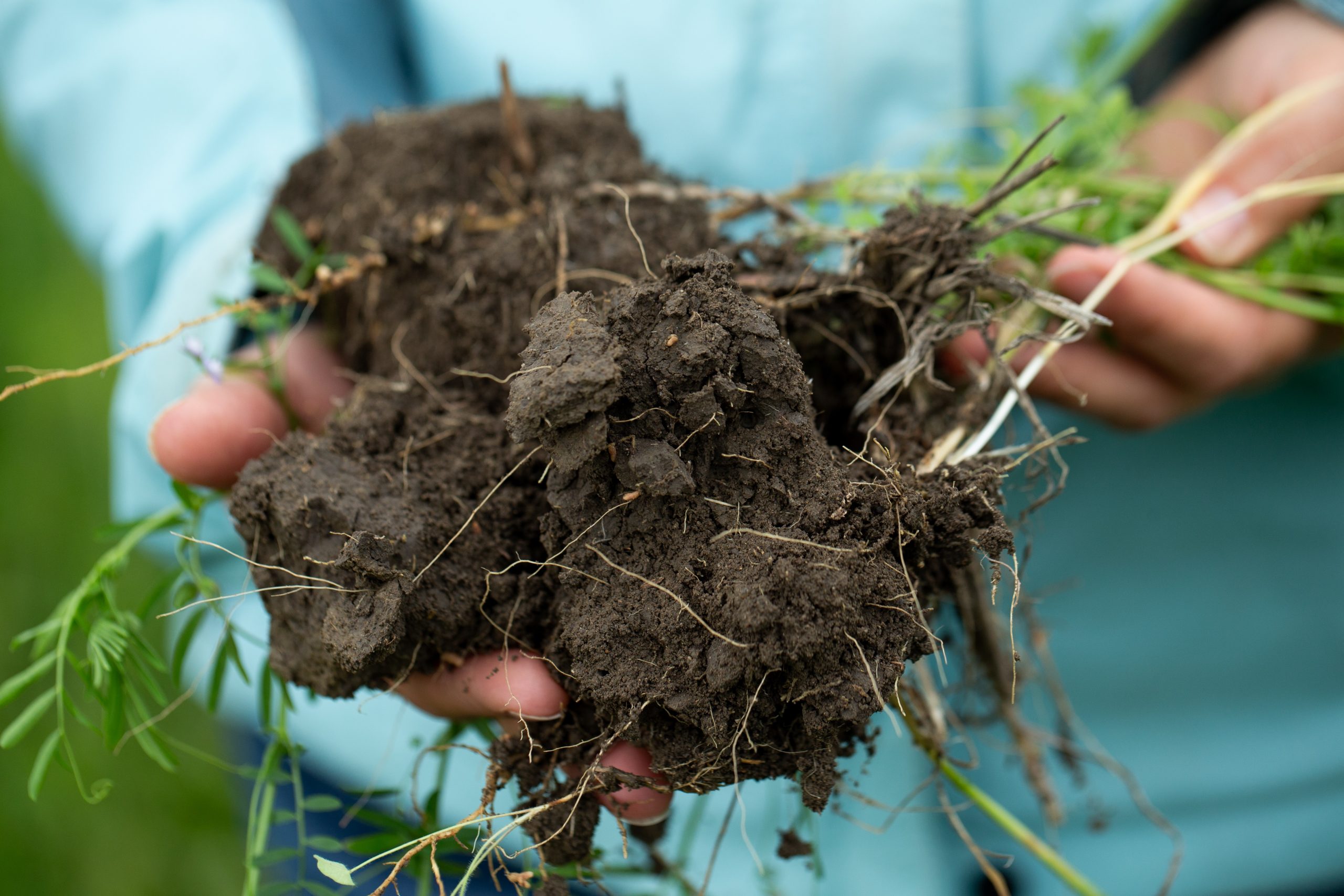There’s a buzz around regenerative organic agriculture, says Elizabeth Whitlow, executive director of the Regenerative Organic Alliance (ROA). Farmers, scientists, big food companies, and even the U.S. government are paying keen attention to soil—its health, its availability, and its huge potential to repair a “broken” agricultural system and help alleviate the dire impacts of global warming.
The ROA launched Regenerative Organic Certification (ROC) to build on existing organic rules and set a “high bar” standard for agricultural practices. The label has three pillars: soil health, animal welfare, and social fairness. With food experts worried about a weakening of the organic standard the regenerative organic standard solidifies organic while going further—to lessen greenhouse gas emissions, regenerate soil, halt animal abuse, and empower farmers with stable living wages and fair policies. Industrial agriculture and factory farming are top contributors to climate change and environmental degradation, Whitlow says. In turn, climate change is making it harder to farm.
“We established Regenerative Organic Certified® to help keep the organic program strong,” Whitlow said. “None of these new REGEN certifications require organic, and we wanted a label with integrity that couldn’t be watered down. We (wanted) to protect the term ‘regenerative,’ from being greenwashed by corporate interests. We believe ‘regenerative’ and ‘organic’ should always go together, so we created ROC to make sure they would always be linked.”
To date, 91 farms, 33,151 smallholder farmers, and 237,404 acres have received ROC certification—representing 151 crop types across four continents. Forty-three food brands have been licensed to make ROC product claims. ROC now has 12 approved certifying bodies and 85 auditors—poised to triple its on-the-ground capacity next year.
Jeff Moyer, CEO of the Rodale Institute, recently told the U.S. House Agricultural Committee that America’s food supply is broken, made worse by uncertainty in weather, markets, and global supply chains, chemical pesticides, and government subsidies that don’t help America’s health or its farming families. Rodale estimates we only have 60 years left of farmable topsoil. “We have the tools and the time to fix this…and regenerative organic agriculture is our path forward,” he said. Several congresspeople are supporting ROA, opening doors.
Establishing a “new normal” for agriculture
The ROA formed in 2017, led by the Rodale Institute, Dr. Bronner’s, and Patagonia. The term “regenerative agriculture” dates back to Dr. George Washington Carver; in the 1980s, Robert Rodale spoke of “regenerative” farming that moved beyond “sustainable”—with soil, farmer lives, and environment all getting continually “better.”
“What we do to the soil, we do to ourselves,” Whitlow often says. Using techniques of cover cropping, crop rotation, compost, low- to no-till, rotational grazing, and absence of chemical pesticides/fertilizers—along with creation of pollinator habitat and vegetation barriers—soil organic matter increases. Healthy soil protects from drought and pests, while feeding microbial life that enhances plants’ nutritive assets. It also sequesters carbon, fosters yields, and retains water.
The second pillar, animal welfare, incorporates the Five Freedoms for animal care, outdoor access and pasture-raising, no CAFOS (confined animal feeding operations), and limited transport.
The social fairness pillar incorporates fair payments and living wages, healthy working conditions, long term commitments, and democratic organizations. The concept: farmers and ranchers can feed communities and cool the planet when compensated fairly and supported.

Elizabeth Whitlow (lower left) and her team at Regenerative Organic Certified farm in Nicaragua
ROC: A rigorous, brand-driven certification
ROC is the highest standard for organic agriculture in the world, certifying food, fiber, and personal care ingredients. In 2019, ROA launched an 18-month pilot project with 19 farms and brands—from Nebraska to Nicaragua—to gather data for framing ROC standards. Soil testing was designed to determine indicators of healthy soil. “From a high bar of eight, we’re down to five in our standard,” Whitlow said. “What we’re presenting can’t be so daunting or expensive that farmers can’t do it.”
The project compared different geographic areas with different labeling laws—such as global South versus global North. Regenerative agriculture is unique to location, while emphasizing some basic, widely adoptable practices. Over 400 stakeholders offered feedback to the initial draft. ROC follows the ISO 17065 standard and requires all certifiers to be NOP accredited.
ROC 1) certifies producers of crops—farms, ranches, farmer coops, and grower groups—for part or all of their operations; 2) licenses companies to make ROC claims on products; and 3) registers supply chain actors that process or handle ROC ingredients for licensees. Participants are eligible for bronze, silver, or gold level certification. Recognized organic, animal welfare, and social fairness certifications are obtained plus ROC-specific guidelines for each pillar.
“ROC will be brand-driven,” Whitlow noted on a podcast with Investing in Reg.ag.com. “Companies pay twice as much as farms, and adoptions by brands will build the system.”
USDA organic certification (or an international equivalent) is a prerequisite to receiving ROC. With only about 1% of U.S. farmland farmed organically—Europe is shooting for 25% organic by 2030—the chemical industry’s grip on agriculture and policy is clear, she noted. Weed management without use of synthetic chemicals is also a barrier—Rodale Institute and others are working on this challenge.
“The social fairness pillar is especially challenging in the Global North,” Whitlow said. “Sixty-five percent of our farm labor comes from undocumented individuals and working conditions, pay, and so forth are not equitable.”
An urgent, ambitious vision on fire
“Although 99% of American farmland is not organic, the concept is on fire…and even reducing tillage will make a major impact,” Whitlow said. “Climate change is seen as a real threat, farmers’ margins and security are slim, and people realize the impact increasing soil health could have. It’s resonating, there’s an excitement about it.”
It involves a change of mindset, she stresses—of valuing the production of high quality food. “It’s a patient capital investment, not to be rushed on ROI; rebuilding soil takes a few years. We also need to overcome thinking that yields are all that matter.”
“Farm like the world depends on it” greets the viewer to the ROA website. It just might.









